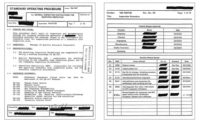The International Organization for Standardization (ISO) is a global body which sets requirements, standards, specifications, and guidelines for industries and businesses to use to ensure that their products, processes and services are fit for purpose.
When Does the ISO Change Their Standards?
The ISO makes changes to and rewrites each standard every few years or so. This depends on the standard in questions and any changes to current industry practices. It’s important that the standards remain relevant for the products, processes and services that businesses provide.
What Happens When the ISO Changes A Standard?
Companies who hold the standard have to react to the changes the ISO makes. Put simply, when a standard is updated it’s up to industry and businesses to implement the changes to the new requirements.
The ISO ensures that all businesses affected are advised of any changes that need to be made via email, magazines, bulletins, and flyers. Every business is made aware that a change is taking place, and they are given a transition period for implementation. This transition period can be up to three years, so there is plenty of time to consider what you need to do to make the changes happen in your business.
Getting to Grips with ISO Standard Changes
When a change to a standard is announced, you’ll receive information on what the changes will entail and when implementation has to begin and end. Read this information carefully and thoroughly!
You will need to apply any new rules to your business, your operating procedures, processes, etc. This will usually involve a series of meetings with the relevant people affected by the change, and will typically start with high level management as they are ultimately responsible for getting systems up and running.
You’ll need consider what types of resources you may need in terms of new equipment, budget, people, and training. You will also need to establish a timeline to implement the changes – it’s best to work backwards from the implementation date to establish the milestone dates that will lead up to this deadline.
Auditing ISO Standard Changes
When you implement any ISO standard changes, you need to undertake to types of auditing: internal and independent.
Use internal audits to test the changes to processes and/or systems yourself. In any case, these internal reviews should be undertaken at least annually, and need to include strengths, weaknesses, non-conformances of the system, complaints – generally, your overall performance against the requirements of the standard. This will show any weak areas that may need to be corrected.
You’ll also need an independent auditing body to audit your business to the new standards. When you’re looking for an auditing body, it’s important to ensure that they are reputable. Look at their certifications (check if they’re accredited by the United Kingdom Accreditation Service, for example), reviews, and testimonials.
It’s important that you’re independently audited with plenty of time before the deadline. Allowing yourself at least two to three months before the deadline will give you time to make any necessary changes that may be highlighted by an audit. If an audit finds a major non-conformance, you will have approximately 30 days to correct the issue.
The benefits to businesses for correctly implementing changes and maintaining their ISO accreditations are numerous. Holding a current ISO accreditation will streamline your processes, increase efficiency, improve customer trust and recognition, provide access to bigger markets and opportunities, and create a stronger work culture.




